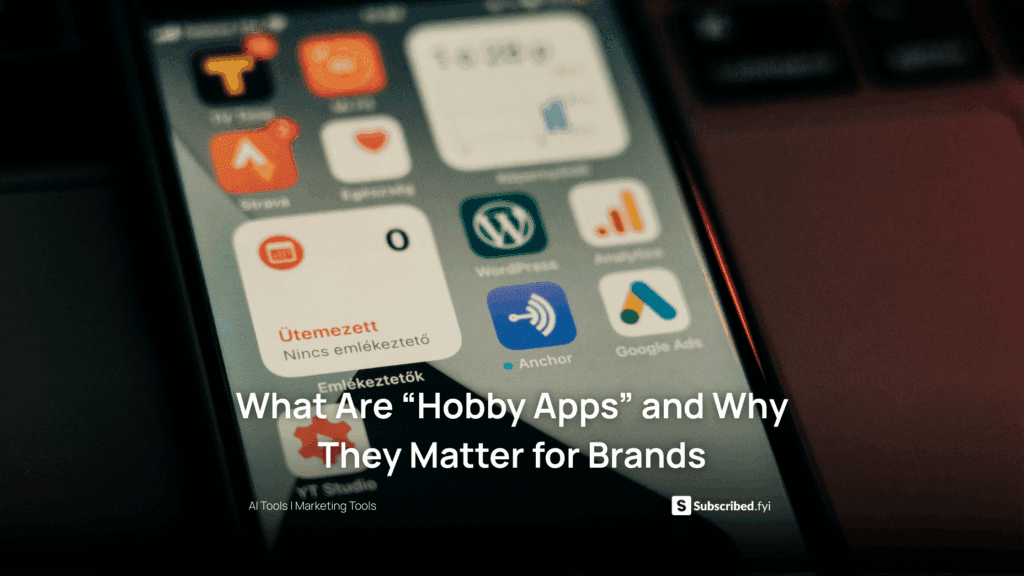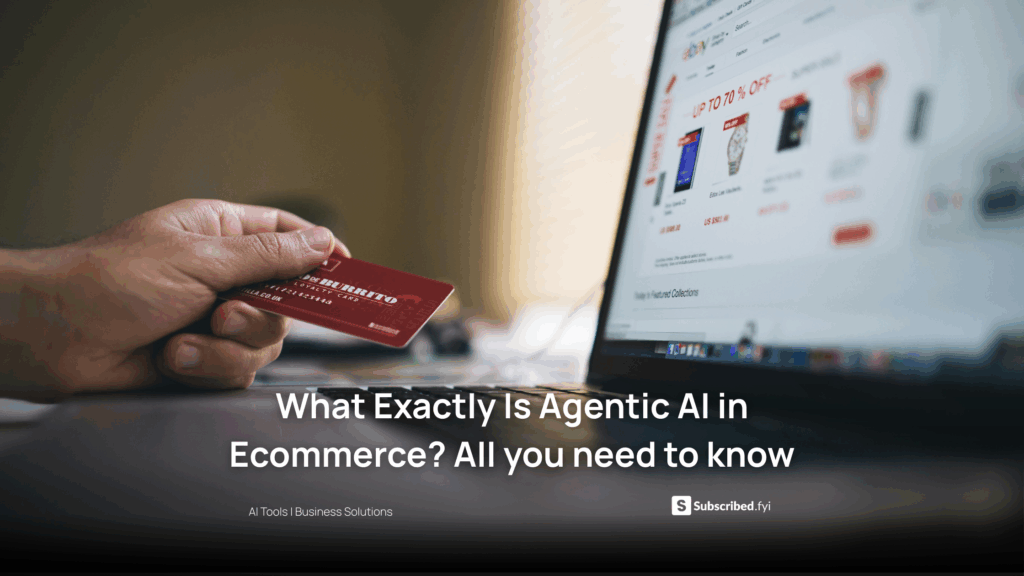How to Embed an AI Chatbot in Your Website Without Coding?
- WebOps Platforms Bug Tracking & Feedback Software Web Development & Design Website Builder


Adding an AI chatbot to your website can boost customer support, capture leads, and improve user engagement—all without writing a single line of code. Tools like Hostinger Horizons and Google’s Dialogflow simplify the process by offering intuitive interfaces and one-click deployment. Instead of wrestling with SDKs or server environments, you configure intents, train responses, and paste a small snippet into your site’s HTML.
Whether you manage a WordPress blog, an e-commerce store, or a custom web app, no-code chatbot solutions integrate seamlessly with platforms you already use. You can compare different builders on the Subscribed.fyi AI-powered website builders directory or explore code-assisted options in the Vibe Coding category. This guide covers everything from chatbot use cases to detailed steps for embedding Dialogflow and Hostinger Horizons’ built-in chat widget, ensuring your site has a smart virtual assistant in minutes.
Why AI Chatbots Matter for Your Website
Enhancing Customer Support
AI chatbots provide instant answers to common questions—order status, product details, troubleshooting tips—any time of day. This 24/7 availability reduces response times and frees your team to tackle complex tickets. According to a survey by Drift, 64% of consumers think 24-hour service is the best feature of chatbots.
Generating Leads and Sales
Beyond support, chatbots can qualify prospects by asking guided questions, collecting emails, and recommending products. Websites see an average 20% increase in lead capture when chatbots present personalized offers during browsing sessions.
Gathering User Insights
Every conversation logs valuable data—frequently asked questions, user pain points, and sentiment trends. Integrating chatbot analytics with Google Analytics or Mixpanel helps shape product roadmaps and marketing strategies.
Picking the Right Chatbot Platform
Dialogflow: Google’s No-Code Agent Builder
Dialogflow lets you create agents by defining intents (user goals) and entities (key terms). It offers a visual console, prebuilt templates, and a fulfillments section for webhook integrations.
Hostinger Horizons’ Chat Module
Hostinger Horizons includes a built-in chatbot wizard. You simply prompt its AI—for example, “add greeting, help menu, and fallback message”—and it scaffolds a working chat widget linked to your site’s sandbox environment.
Lazy AI for Conversation Workflows
Lazy AI automates repetitive setup tasks—like bulk-importing FAQs or generating follow-up prompts. It integrates with Dialogflow and other platforms via webhook configurations.
Fine AI for Response Polishing
Fine AI analyzes your training phrases and suggests alternative wordings or tone adjustments, ensuring your chatbot feels natural and on-brand.
Mapping Out Your Chatbot Use Cases
FAQ Handling
Compile the top 10–20 questions customers ask. Use your site’s search logs or support tickets as a source. A focused FAQ chatbot can answer up to 70% of routine inquiries without human intervention.
Lead Qualification
Design a flow where the chatbot asks about budget, timeline, or project scope. Once a user provides key details, the bot collects contact info and notifies your sales team.
Appointment Scheduling
If you run a service business, integrate Google Calendar or Calendly via webhooks to let users book slots directly in the chat window.
Content Recommendations
Use chatbot logic to suggest blog posts, product pages, or tutorials based on keywords in a user’s query—driving deeper engagement.
Preparing Your Site for Chatbot Integration
Identifying Key Pages
Decide whether the chatbot appears site-wide or on specific pages (e.g., pricing, support). Placing it on high-traffic pages maximizes visibility and impact.
Gathering Conversation Flows
Sketch simple flowcharts outlining user paths: greeting → question selection → answer or redirect to human agent. Tools like Tempo let you upload these wireframes for AI-assisted prototyping.
Embedding a Dialogflow Chatbot Step by Step
1. Create a Dialogflow Agent
- Sign in to the Dialogflow console.
- Click Create Agent, give it a name, and select your default language and time zone.
2. Define Intents
- Under Intents, add Default Welcome Intent for greetings.
- Create new intents—FAQ, Lead Capture, Fallback—and assign training phrases (e.g., “How can I contact support?”).
3. Configure Entities (Optional)
- For dynamic responses, define entities (e.g., product names or dates) to extract from user input.
4. Test in the Simulator
- Use the right-hand chat simulator to type messages and validate responses.
5. Enable Web Demo Integration
- Go to Integrations, toggle on Web Demo, and copy the generated embed code snippet.
6. Paste Snippet into Your Site
- Insert the
<iframe>code or JavaScript snippet into your website’s HTML just before the closing</body>tag. - Refresh your page to see the chatbot in action.
Using Hostinger Horizons’ Built-In Chat Widget
1. Open Your Horizons Project
- Log in to Hostinger Horizons and select your web project from the dashboard.
2. Ask for Chat Module
- In the AI chat interface, enter: “Add an AI chatbot with welcome message, menu options, and fallback reply.”
- Horizons generates the module, integrates it into your page structure, and deploys it to a real-time sandbox.
3. Customize Appearance
- In the Components panel, adjust colors, avatar image, and position (bottom-right by default).
- Set triggers: on page load, after X seconds, or when a user scrolls to 50%.
4. Connect Email Notifications
- Under Settings, link your support email (e.g., support@yourdomain.com) so unread queries route to your inbox.
5. Go Live with One Click
- Click Publish, and the chatbot is live on your custom domain with SSL secured automatically.
Fine-Tuning Chatbot Conversations
Adding Rich Responses
Include images, cards, and quick-reply buttons to make interactions more engaging. Dialogflow supports these via the Responses section; Horizons offers drag-and-drop controls for the same.
Context Handling
Maintain multi-step conversations by setting Input and Output Contexts in Dialogflow or defining session parameters in Horizons. This lets your bot ask follow-up questions based on previous answers.
Human Handoff
Define a keyword like “agent” that triggers a live support handoff. Set up a webhook to notify your Slack or Microsoft Teams channel when a user requests human help.
Tracking and Improving Chatbot Performance
Analytics Dashboards
Connect your chatbot to Google Analytics by adding the GA tracking code to the embed snippet. Hostinger Horizons also offers built-in metrics on message volume, user satisfaction scores, and response times.
A/B Testing Greetings and Flows
Test different welcome messages or menu structures to see which yields higher engagement. Horizons’ A/B testing module automates traffic splits and reports on key metrics.
Iterative Training
Regularly review the Training Phrases tab in Dialogflow or the Horizons chat logs. Expand phrases, add new intents, and retrain your model monthly to maintain accuracy.
Best Practices for No-Code Chatbot Deployment
- Keep It Simple: Start with core use cases, then expand.
- Write Human-Like Responses: Use natural language and empathy.
- Set Clear Expectations: Let users know what the bot can and cannot do.
- Secure Data: Ensure user inputs are sanitized and sensitive data is protected.
- Provide Easy Exit: Always offer a “Talk to Human” option.
Built for Speed and Scale: Hostinger Horizons in Action
Hostinger Horizons brings chatbot integration under one roof. Its AI chat interface not only generates web pages but can scaffold chat widgets, configure email routing, and deploy your site live—complete with domain and SSL—in minutes. With support for over 80 languages and a global CDN, Horizons ensures your AI assistant performs reliably for visitors anywhere in the world. By bundling hosting, domains, email, SSL, and expert support, Hostinger Horizons cuts your setup time dramatically, so you can focus on crafting helpful, engaging chatbot experiences.
Whether you choose Dialogflow for advanced conversational design or the built-in Horizon widget for rapid deployment, having a unified platform makes the process seamless. You avoid fragmented dashboards and complex configurations, relying instead on a single AI-driven environment that handles both site and chatbot. This all-in-one approach means fewer errors, faster iterations, and clear billing—ideal for solopreneurs and small teams aiming to launch smart customer support tools without a developer.
Putting It All Together: Your No-Code Chatbot Roadmap
Embedding an AI chatbot without coding is now within everyone’s reach. By following structured steps—defining intents, configuring responses, and embedding snippets—you can add a virtual assistant that improves support, drives engagement, and collects valuable insights. Whether you use Dialogflow’s powerful agent console or Hostinger Horizons’ seamless AI chat module, the right platform will match your technical comfort level and business goals. Start small with FAQs, iterate based on real user feedback, and expand to lead generation or appointment booking as your confidence grows. With no-code tools at your disposal, your website can deliver personalized, 24/7 assistance in minutes, not weeks.
Relevant Links
- Hostinger Horizons
- Dialogflow
- Lazy AI
- Fine AI
- Tempo
- Subscribed.fyi AI-Powered Website Builders
- Vibe Coding Directory
- Bolt
- Lovable AI
- Cursor





